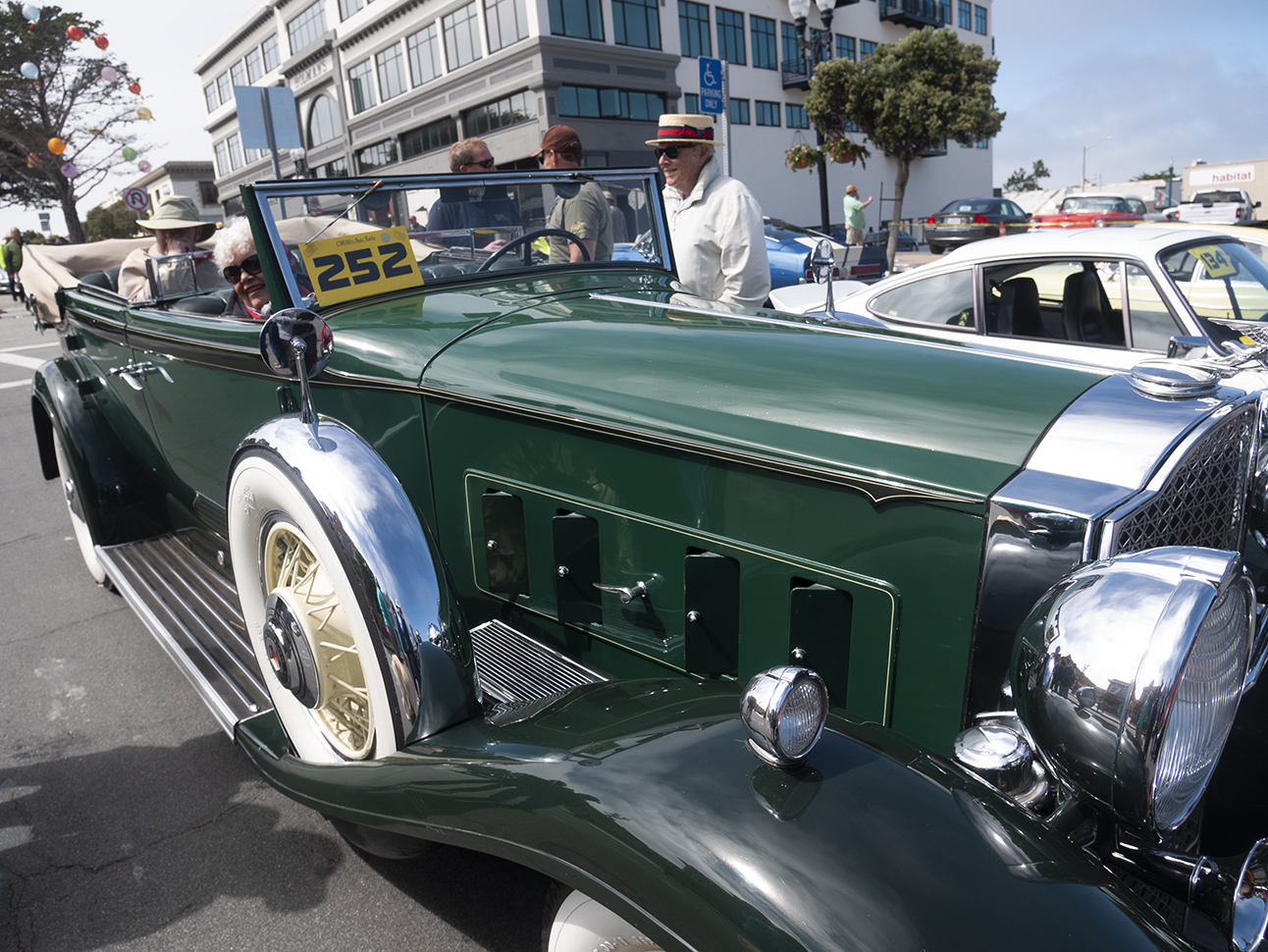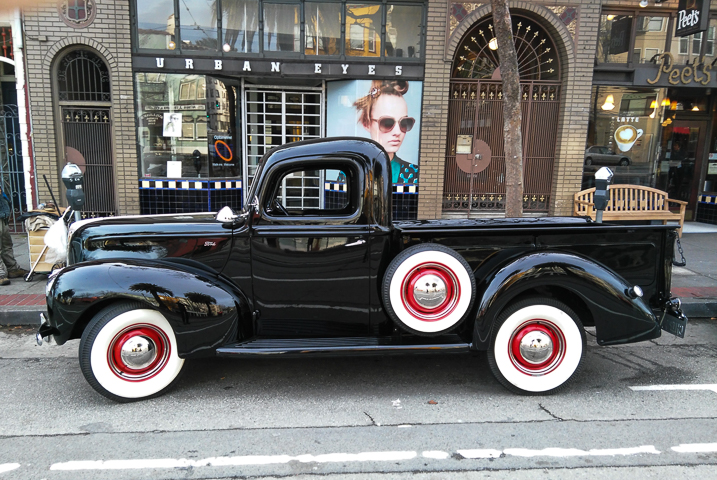Click on the picture to Z O O M in.  So, I was on my way to Safeway with my dog and I saw this gem pulling into the parking lot. I knew a little bit about this era and asked the driver about the car. “Is this the three cylinder version?”, I asked. “I don’t know, it’s my wife’s car”, he replied and opened the hood. We looked and saw it was a V4. He explained that his wife purchased the car new in Louisiana and had driven it here many years ago. The car is in really good shape, considering.
So, I was on my way to Safeway with my dog and I saw this gem pulling into the parking lot. I knew a little bit about this era and asked the driver about the car. “Is this the three cylinder version?”, I asked. “I don’t know, it’s my wife’s car”, he replied and opened the hood. We looked and saw it was a V4. He explained that his wife purchased the car new in Louisiana and had driven it here many years ago. The car is in really good shape, considering.




Click on the pictures to Z O O M in.
[youtube=http://www.youtube.com/watch?v=ahs_tKEjacM&w=420&h=315]
The following was extracted from Wikipedia.
Click Here for more information.
In the 1950s and 1960s, the Saab 93, Saab 95, Saab 96, and certain DKW automobiles were powered by inline-three-cylinder, two-stroke engines. Also, the Wartburg automobiles manufactured in Eastern Germany, and FSO Syrena manufactured in Poland, used this kind of engine. Between 1962 and 1964 Kjell Knutsson and Ingvar Andersson under Rolf Mellde tested three different engines, Lloyd Arabella 897 cc and 45 hp, a Morris Mini 848 cc, 33 hp engine and a Lancia Appia engine of 1089 cc and 48 hp. However Rolf Melldes view that Saab needed to switch to a four-stroke engine was stopped higher up by CEO Tryggve Holm. Mellde then went behind the back of Holm and made contact with Marc Wallenberg, son of Marcus Wallenberg, Saab’s major stockholder. The coup succeeded and testing could begin.
The testing was done in secrecy. Rolf Mellde took a leave of absence and said he was going to run his father’s paint shop. In reality he went to Desenzano in northern Italy with a 96V4 prototype for testing. With five months to go before production only seven persons knew about the new engine. To maintain secrecy they rented a house west of Kristinehamn. To keep purchases of V4 specific parts secret they started the companyMaskinverktyg AB. The ordinary purchase department at Saab was oblivious to what was going on, something that caused an incident when Rune Ahlberg cancelled the orders for cables for the two-stroke engine and the purchase department called the supplier and sharply told them to keep their deliveries.
The last week of July, just before the summer holidays, the information about the new engine was given to some more people and they were informed that full scale production would start in four weeks. To keep secrecy, 40 of the ordinary staff was told to report to work to fix a problem with the disc brakes. The secret was kept until a journalist some days before the official introduction noticed a lorry loaded with 96s that had V4 stickers on the front bumpers.[1] The first V4 engines produced 55 hp (48 kW) and 65 hp (48 kW) from 1967-1980. The car managed 0–100 km/h in 16 seconds. The two-stroke option continued into 1968. In the US, the two-stroke engine was called the ‘Shrike’ at that time. Its displacement was reduced slightly, to 819 cc to avoid emission regulations which exempted engines under 50 in³, while the V4s used in US cars had a 1700 cc low compression engine.
© Fred Winograd copyright 2009, 2013



































